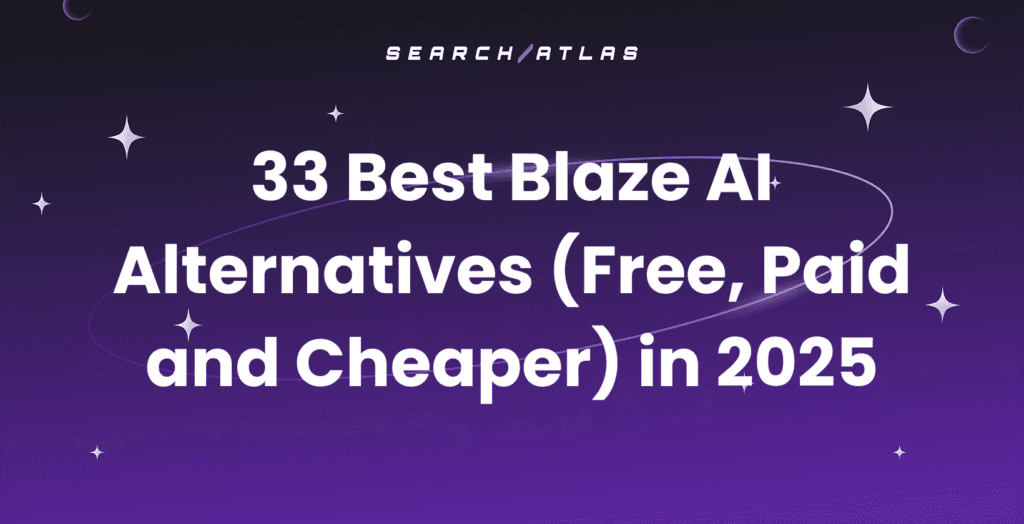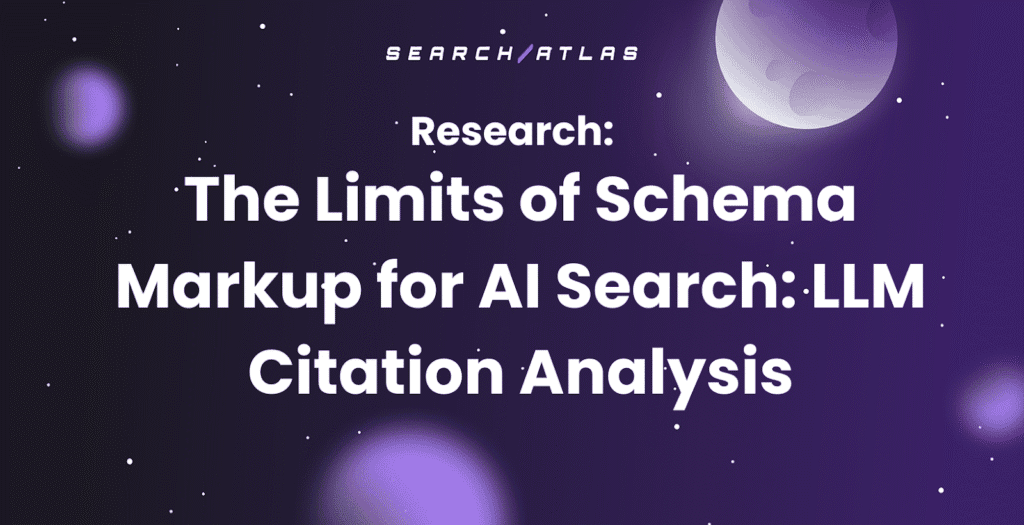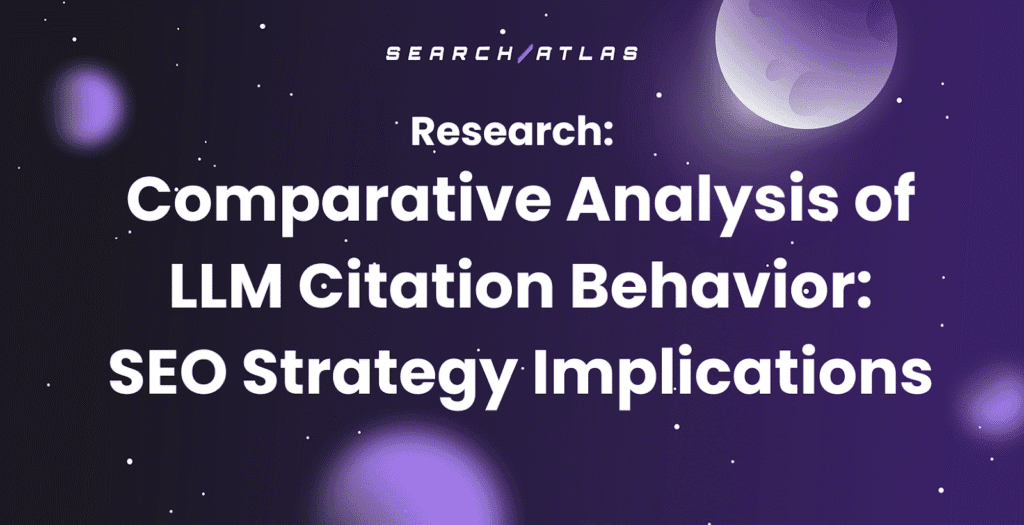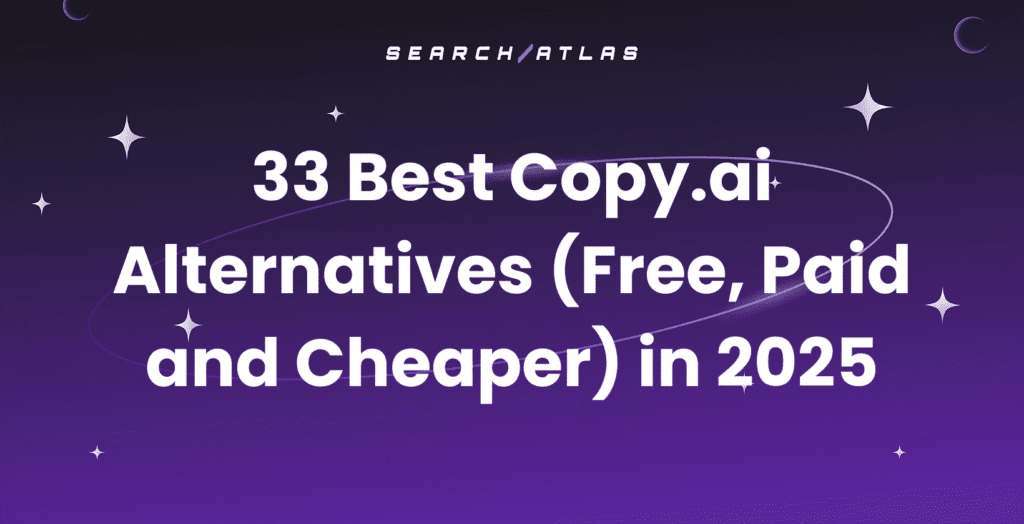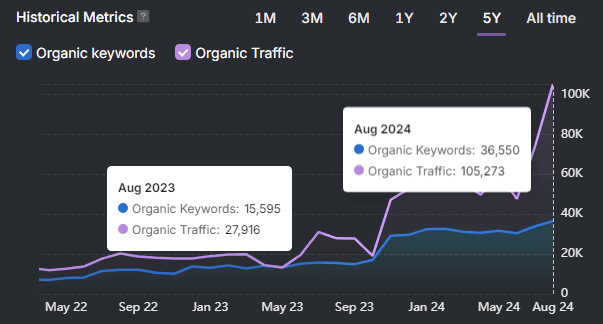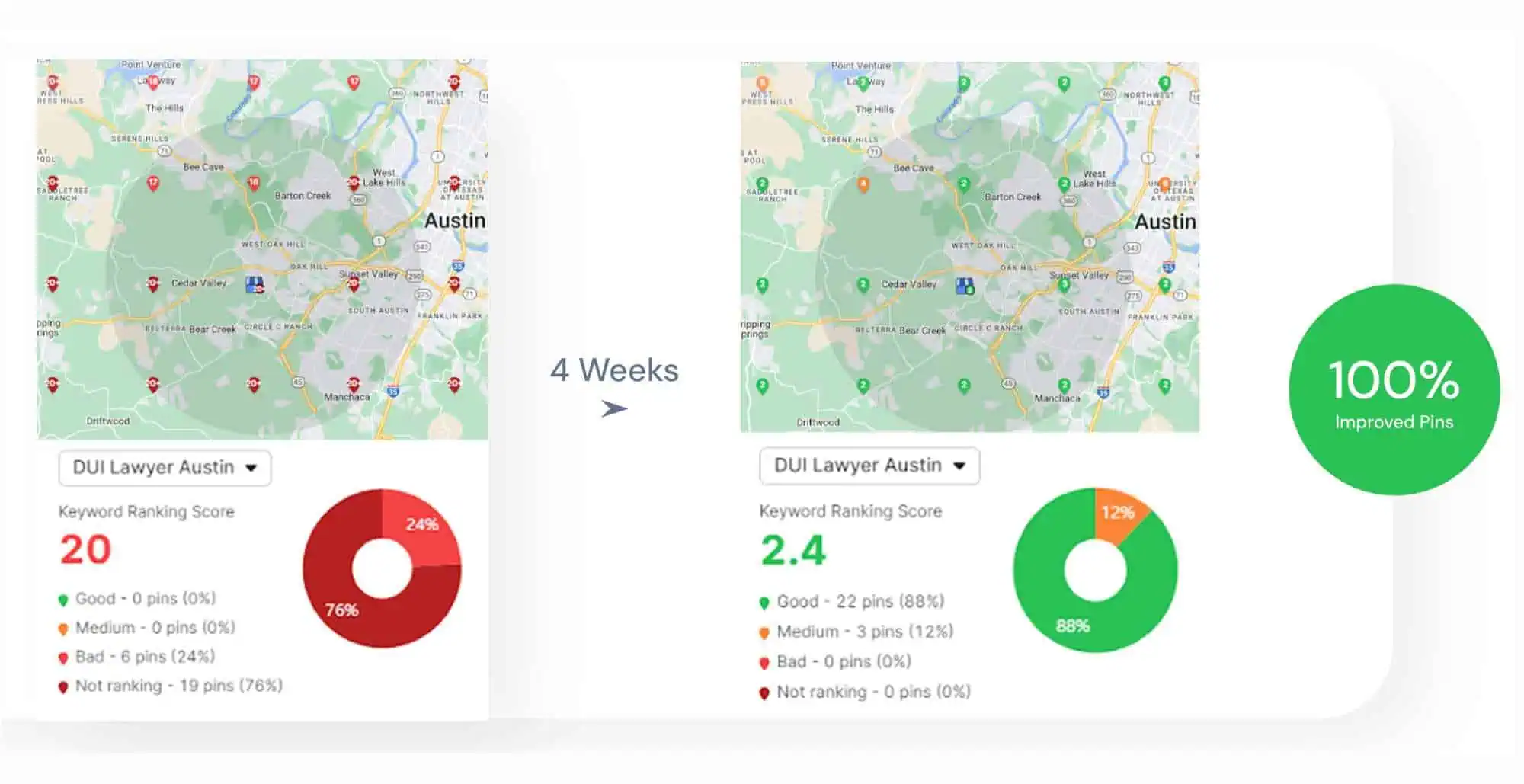SEO techniques are tactical methods used to improve how web pages rank in organic search results. SEO techniques follow search engine optimization (SEO) best practices and help websites satisfy user intent, increase visibility, and outperform competitors.
SEO techniques apply to different parts of the optimization process, including keyword research, on-page structure, content refresh cycles, off-page authority, and technical performance.
The most important search engine optimization techniques include analyzing top-performing pages in SERPs, tactical internal linking, backlink building, and schema markup. SEO methods work when they match search engine methodologies like Google’s Helpful Content System, Page Experience signals, and semantic indexing with BERT. Effective SEO tactics help websites become more discoverable and more useful to searchers.
The 15 SEO techniques to improve rankings and drive more traffic are listed below.
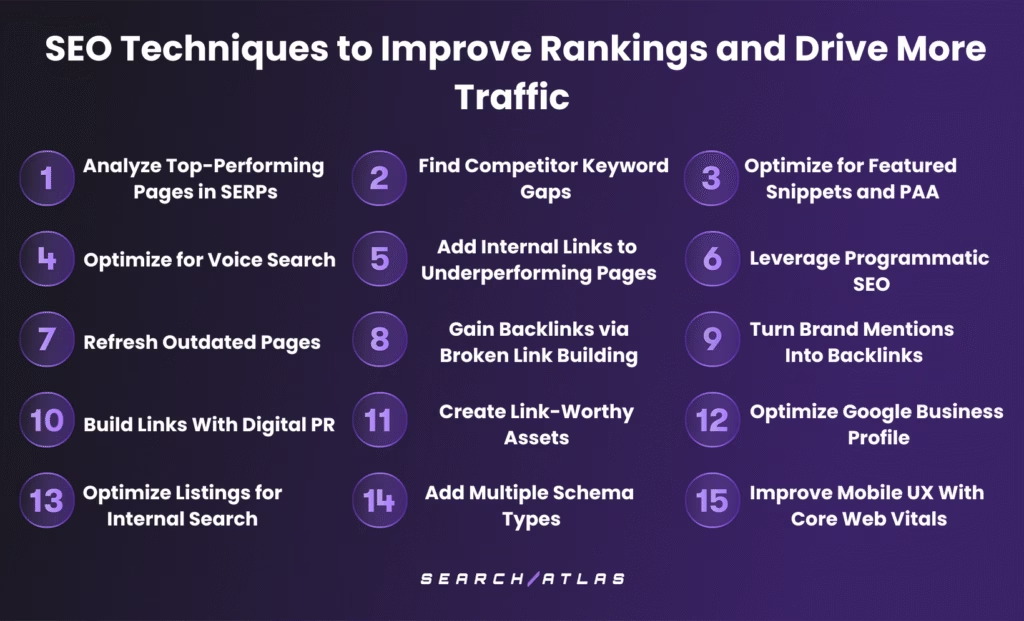
1. Analyze Top-Performing Pages in SERPs
Analyzing top-performing pages is one of the best competitor analysis SEO techniques that involves studying the highest-ranking URLs in your niche to identify content patterns, intent matches, and structural signals that drive traffic and visibility.
Analyzing top-performing pages shows you what already works on the SERP, so you reverse-engineer success. This competitor analysis SEO technique helps you align content structure, topical depth, and formatting with Google’s ranking preferences for a specific query.
To easily analyze top-performing pages in the SERPs, follow the steps below.
- Use the Search Atlas Keyword Research Tool to enter a target keyword (e.g., “social media”).

- Examine the top 10 URLs in the SERP overview. Note domain authority, backlink profile, and traffic estimates.
- Analyze what makes them rank. Is it definition-style content? Do they have listicles? Do they mention tools? What’s their average word count? How often do they use headers, images, and internal links?
- Click on each URL to assess how deeply they cover the topic. Compare formats.
- Identify the content type, search intent match, and page architecture that align with Google’s expectations.
- Use this intel from the Search Atlas Keyword Research Tool to guide how you outline, structure, and support your own content.
The SERP for “social media” includes pages from Wikipedia, Investopedia, and TechTarget. Wikipedia ranks #1 because of entity depth. TechTarget ranks #2 because it matches the query with a direct definition, semantic markup, and strong authority. You can emulate this with a structured, entity-rich overview that includes schema and FAQs.
2. Find Competitor Keyword Gaps
Finding competitor keyword gaps is the process of identifying search queries that your competitors rank for but your domain does not.
Keyword gap analysis is one of the most effective keyword research techniques for improved organic SEO traffic because it identifies prequalified opportunities with demonstrated search interest. Instead of guessing which topics might perform, you target keywords with proven traffic potential that align with your content strategy.
To find competitor keyword gaps, implement the keyword research SEO techniques listed below.
- Identify your direct competitors who target similar audiences.
- Upload your domain and competitor URLs to a keyword gap analysis tool like the Search Atlas Keyword Gap Tool. The Search Atlas Keyword Gap Tool allows you to compare up to five domains and filter results by keyword gap, keywords in common, keyword opportunities, unique keywords, or all keywords to find the most valuable prospects.
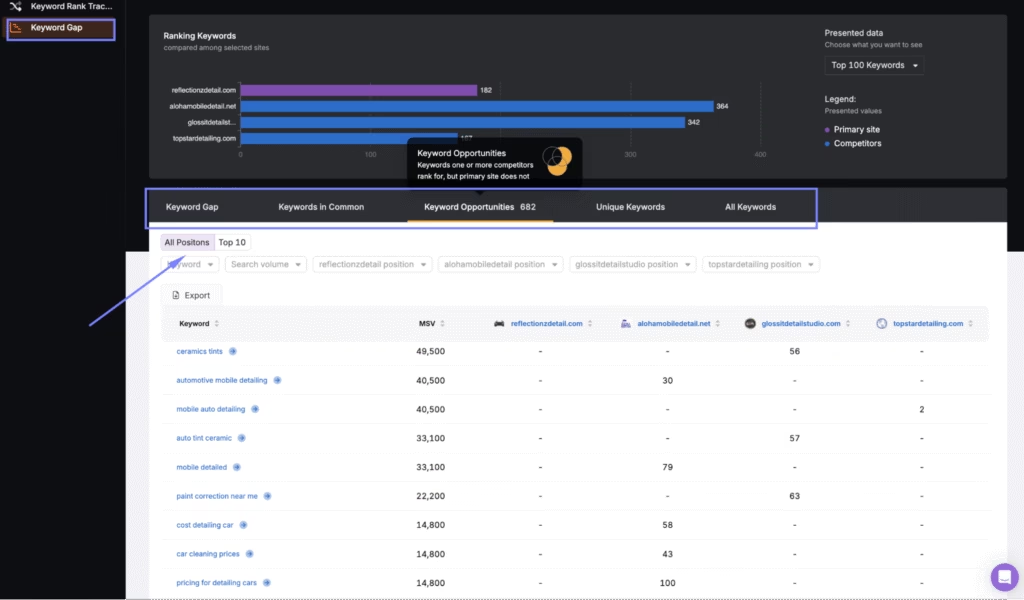
3. Switch to the “Keyword Opportunities” tab. This shows keywords that one or more competitors rank for, but your site does not.
4. Prioritize keywords based on search volume, competition level, and alignment with your business goals.
3. Optimize for Featured Snippets and People Also Ask (PAA)
Optimizing for Featured Snippets and People Also Ask (PAA) boxes means structuring content to appear in these prominent SERP features that display above traditional organic results. Featured Snippets show concise answers to specific queries, while PAA boxes contain related questions and expandable answers.
Featured Snippet on-page SEO optimization increases visibility, establishes authority, and drives more clicks even from lower organic positions. Google extracts these snippets from pages that answer common questions in formats that are easy to parse and display.
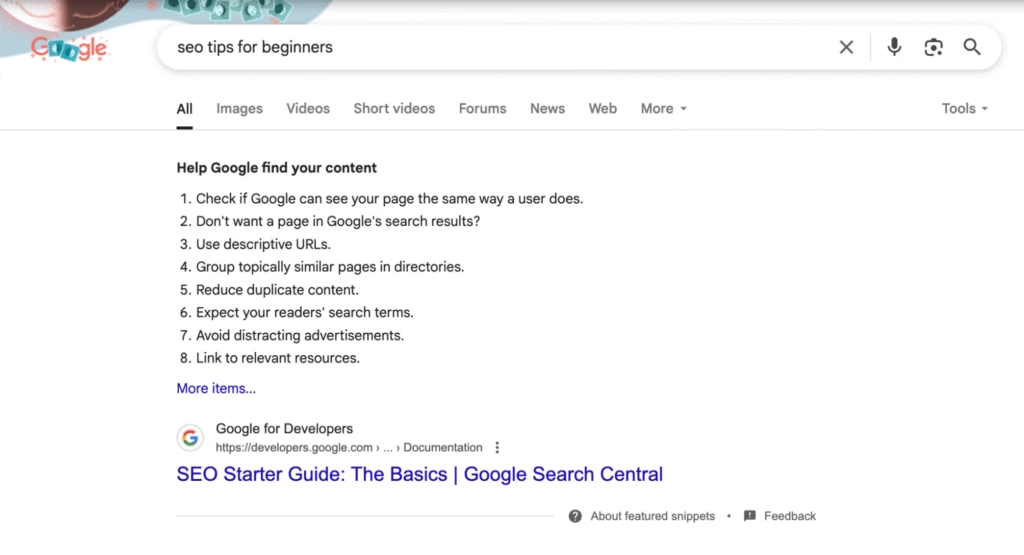
To optimize for Featured Snippets and PAA, follow the best on-page SEO techniques listed below.
- Identify featured snippet opportunities in your niche using the Search Atlas Keyword Magic Tool.
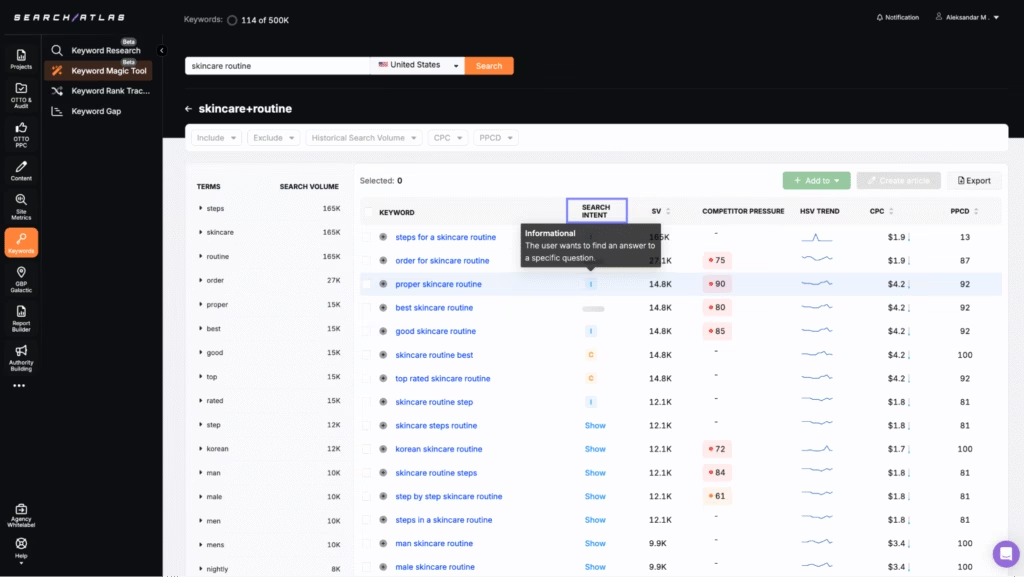
Filter for keywords with informational or commercial intent in the Search Atlas Keyword Magic Tool.
- Check the Search Atlas Keyword Research Tool’s SERP Features column for queries that trigger snippets or PAA.
- Structure content with clear headings (H2, H3) in question formats.
- Provide concise answers (40-60 words) immediately after each question heading, defining terms clearly before elaborating.
- Answer PAA-style questions with subheadings that exactly match common user queries, one-sentence answers directly beneath each subheading, and expansion paragraphs below the definition to provide additional context.
- Use snippet-friendly formatting, such as numbered lists for processes, bullet points for feature, and tables for comparisons.
- Add FAQ schema markup to increase the likelihood of appearing in PAA boxes.
When optimizing existing content, search for the target keyword in Google to see if a Featured Snippet already appears. Study its format (paragraph, list, table) and structure your content to provide a more comprehensive answer in the same format.
4. Optimize for Conversational and Voice Search
Optimizing for conversational and voice search involves structuring content to match the way people speak when using voice assistants like Google Assistant, Siri, or Alexa. Conversational and voice search queries tend to be longer, question-based, and more natural in tone than traditional typed searches.
Voice search SEO techniques focus on capturing featured snippets, zero-click results, and long-tail queries. To optimize for conversational and voice search, follow the voice search SEO techniques listed below.
- Use full-sentence questions as headers, especially with informational or local intent (e.g., “What time does [store] open on Sunday?”).
- Answer directly below with 1–2 sentence summaries, using natural language and clear definitions.
- Add schema markups such as FAQ, Q&A, and HowTo to increase your content’s eligibility for voice-friendly SERP features.
- Target long-tail and low-difficulty phrases pulled from the Search Atlas Keyword Magic Tool or autocomplete results in mobile voice queries.
- Improve mobile usability and page speed, as most voice searches happen on mobile devices.
5. Add Internal Links to Underperforming Pages
Adding internal links to underperforming pages is an on-page SEO technique that connects less visible content to high-authority pages within your site. Adding internal links to underperforming pages distributes PageRank, improves crawl paths, and strengthens topical relevance signals.
Internal linking passes authority from strong pages to weaker ones, making them more visible to search engines and users. Pages that receive internal links from relevant, high-traffic sources improve rankings over time as they benefit from the site’s accumulated authority.
To add internal links to underperforming pages, follow the internal linking techniques for SEO listed below.
- Identify underperforming pages with ranking potential using the Search Atlas GSC Performance Tool.
- Navigate to the Top Organic Keywords tab and filter by ranking positions 11-20 and 21-50 to isolate pages in striking distance.
- Use the Top Organic Pages section of the Search Atlas GSC Performance Tool to identify URLs with high impressions but low traffic, which indicates opportunity gaps.
- Cross-check these URLs in the Pages > Organic Pages tab to view the average position, top keyword, and total traffic for each page.
- Open the Page Explorer section in the Search Atlas Site Audit Tool and locate underlinked or orphaned URLs with few or no incoming links.
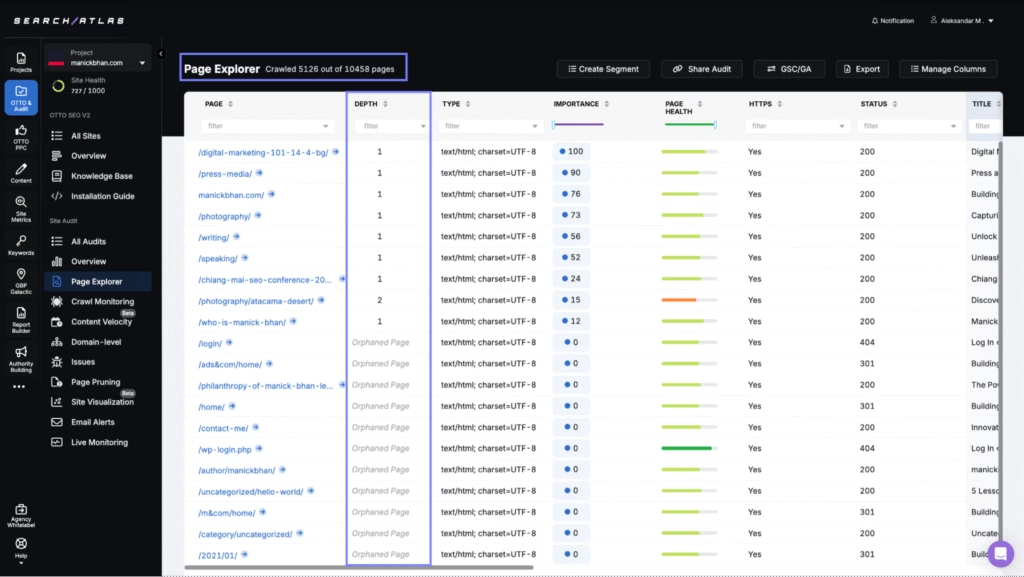
- Add context-rich anchor links from authoritative pages ranking in the top 10 for related keywords. Use anchor text that matches the destination page’s target query.
- Prioritize links from pages with strong traffic and overlapping search intent clusters.
- Use paragraph-based linking (not menu/sidebar/footer links) to send stronger semantic signals.
Adding internal links is especially valuable for pages ranking on the edge of page one, typically in positions #11 to #20. Search engines treat contextual internal links from authoritative pages as ranking signals, so even a few strategic additions can move a page up into the top 10.
6. Leverage Programmatic SEO
Programmatic SEO is one of the tactical search engine optimization methods that involves creating large numbers of similar pages at scale using templates and data sources to target long-tail keyword variations. The programmatic SEO technique generates content that addresses specific search queries across locations, categories, or product attributes.
Programmatic SEO works because it captures highly specific search intent that larger competitors often overlook. By creating dedicated pages for narrow queries, websites can rank for thousands of long-tail keywords that individually have low volume but collectively drive significant traffic.
To leverage programmatic SEO, follow the best programmatic SEO techniques outlined below.
- Identify a scalable topic pattern where the same information structure applies to multiple entities (locations, products, services) using the Search Atlas Keyword Research Tool. Look for modifiers like “best X in [location],” “how much does X cost,” or “X alternatives.”
- Use the Search Atlas Keyword Magic Tool to extract hundreds of variations. Filter by transactional or informational intent and export keywords with a similar structure.
- Group keywords by pattern. For example, “Cost of living in [city]”, “Best coworking space in [city]”, or “Airbnb SEO tips for [city]”.
- Create a data source with all variations (e.g., a spreadsheet with cities, neighborhoods, and products).
- Design a flexible content page template with fixed elements and variable slots.
- A dynamic page template should include a unique H1 with the keyword, a location- or entity-specific introduction, structured content blocks (e.g., tables, pros and cons, FAQ), and internal links to related cities, alternatives, or resources.
- Generate unique metadata for each page variant to avoid duplicate content issues.
- Implement proper canonicalization and internal linking to maintain quality signals.
- Build and interlink pages using a logical URL structure, like /cost-of-living/[city-name]/.
- Monitor rankings using the Search Atlas Rank Tracker Tool. The Search Atlas Rank Tracker Tool shows tracked keywords’ performance in Organic Desktop, Organic Mobile, Local Pack, and Local Search results.
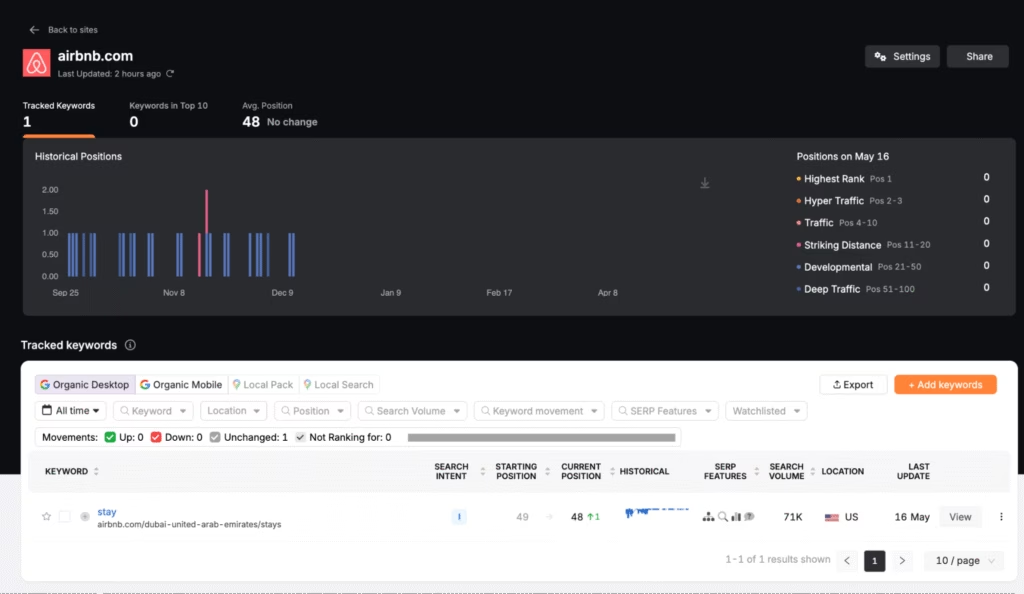
For example, a real estate website might create pages for “apartments in [neighborhood]” across hundreds of neighborhoods, using the same template but populating it with neighborhood-specific data points like average rent, amenities, and transportation options.
Programmatic SEO works best when targeting underserved SERPs with consistent patterns. Combine this SEO technique with on-page optimization and internal linking to scale without sacrificing quality.
7. Refresh Outdated Pages With New Data
Refreshing outdated pages with new data involves updating existing content with current information, statistics, and examples to maintain relevance and freshness signals.
Refreshing outdated pages with new data is a fast, low-effort SEO technique that improves rankings, reclaims lost traffic, and aligns content with current search intent. Google favors recently updated pages that reflect the most accurate, relevant information.
Updating old pages is one of the quickest search engine optimization methods that preserve established page authority while improving alignment with current search intent.
To refresh outdated content, implement the steps listed below.
- Audit existing content to identify pages with declining impressions, clicks, or position metrics.
- Update statistics, examples, and references with current data and recent sources.
- Expand sections to address emerging subtopics or questions that weren’t covered in the original version.
- Improve formatting with the current best on-page SEO practices like featured snippet optimization, bullet points, and multimedia elements.
- Adjust meta information (title, description, schema) to reflect updated content.
- Republish with a new date and use the Search Atlas URL Indexer Tool to request faster recrawling.
The Search Atlas SCHOLAR Tool evaluates content freshness and identifies outdated elements that need updating. The Search Atlas SCHOLAR Tool analyzes semantic connections and provides actionable recommendations for improving relevance and comprehensiveness.

8. Gain Backlinks via Broken Link Building Technique
Broken link building is a white-hat link acquisition SEO technique that identifies dead outbound links (404) on other websites and suggests your content as a replacement. Broken link-building technique earns backlinks by helping site owners fix broken links that harm user experience and SEO performance.
Unlike cold outreach, broken link building solves a real problem, which makes it one of the highest-converting link-building SEO techniques for editorial links.
To build backlinks via broken link building, follow the steps below.
- Use the Search Atlas Site Audit Tool to crawl industry websites and detect broken external links. Enter your target website in the Search Atlas Site Audit Tool, run analysis, and review the Issues section to find broken links that represent replacement opportunities.
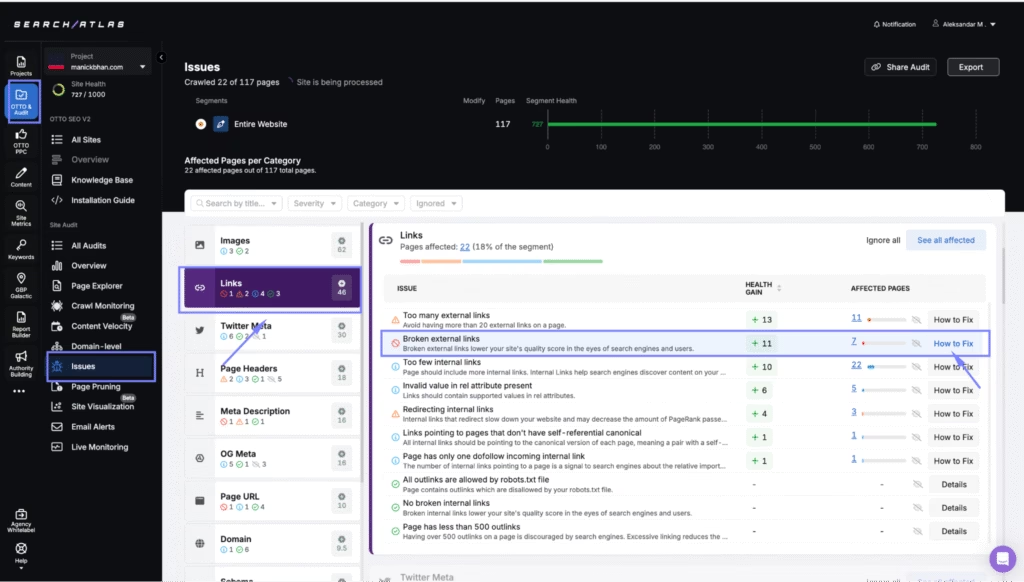
- Focus on resource pages, blog posts, or guides that link out to industry content and regularly go out of date.
Develop or adapt an existing piece of content that directly matches the topic and purpose of the dead link. - Reach out to the webmaster, highlight the broken link, and recommend your replacement as a useful resource.
Broken link building is one of the top link-building SEO techniques that earn editorial links with minimal friction and supports E-E-A-T by associating your site with quality link neighborhoods.
9. Turn Brand Mentions Into Backlinks
Turning brand mentions into backlinks is a link reclamation technique that involves finding unlinked mentions of your business and requesting a link to the relevant page on your site. Many websites reference your name or product without linking, especially in reviews, news coverage, or roundups.
To turn brand mentions into backlinks, follow the best backlinks SEO techniques below.
- Set up Google Alerts to receive notifications whenever your brand appears online.
- Use the Search Atlas SEO platform or a media monitoring service to find recent brand mentions across blogs and publications.
- Filter out domains that already link to you or use nofollow attributes.
- Reach out to the editor or webmaster with a polite, value-driven request to link the mention to your homepage, product, or content asset.
Turning brand mentions into backlinks is one of the proven backlinks SEO techniques that works well because the author already acknowledges your brand. They just need a small nudge to convert the mention into a link. It’s a high-conversion method to build links from editorial content without creating new assets.
10. Build Links With Digital PR
Building links with digital PR is an advanced off-page SEO technique that earns high-authority editorial backlinks by turning brand stories, original data, and expert commentary into newsworthy coverage. Digital PR aligns public relations with SEO objectives and helps you amplify content reach while securing contextual backlinks from trusted publications.
Unlike traditional link building, digital PR focuses on brand exposure and credibility signals.
To execute digital PR SEO techniques, follow the tips listed below.
- Create newsworthy content using data-driven studies, original research, or thought leadership commentary. Format it for press use. Include visual assets, quotes, and compelling angles.
- Leverage trending topics with reactive campaigns (newsjacking) that provide expert insights or timely perspectives aligned with current events or seasonal themes.
- Use the Search Atlas Digital PR Tool to create publisher outreach campaigns. Filter journalists by beat, publication type, and topic match to increase pitch success rates.
- Repurpose content across formats. Turn data reports into infographics, short-form social posts, and media kits to extend reach across platforms.
- Respond to journalist requests on HARO, Qwoted, or SourceBottle to earn quick placements with backlinks.

Digital PR builds authority through third-party endorsements that outperform self-published content in trust and visibility. Successful campaigns through the Search Atlas Digital PR Tool generate dozens of contextual backlinks from domains with high Domain Power, making this one of the most effective, scalable link-building methods available.
11. Create Link-Worthy Assets
Creating link-worthy assets is an SEO content technique that involves publishing tools, data, or resources that naturally attract backlinks. Link-worthy assets earn links passively over time because they provide unique value to your industry.
To create link-worthy assets, follow the steps below.
- Identify gaps in your niche. What data, tools, or resources are missing?
- Build high-utility formats like calculators, templates, interactive maps, comparison tables, or visual timelines.
- Add original research, survey results, or industry benchmarks that are frequently cited.
- Promote the asset with outreach campaigns through Search Atlas Digital PR and Outreach tools and internal links from related content.
Examples of link-worthy content include cost calculators, free SEO tools, or long-form explainers with embedded data visualizations. Link-worthy assets strengthen topical authority and generate organic backlinks from trusted sources.
12. Optimize Google Business Profile and Local Citations
Optimizing your Google Business Profile (GBP) and local citations is a foundational local SEO technique that improves visibility in Google’s Map Pack, drives foot traffic, and strengthens local trust signals. Local SEO relies on accurate business data, keyword-rich GBP content, and consistent citations across aggregators to rank higher for geo-specific queries.
To optimize Google Business Profile and local citations for local SEO, follow the local SEO techniques listed below.
- Claim and complete your GBP in the Search Atlas Google Business Profile Management Software with full business details, service areas, hours, and categories. Use keywords that match local search queries in the business description.
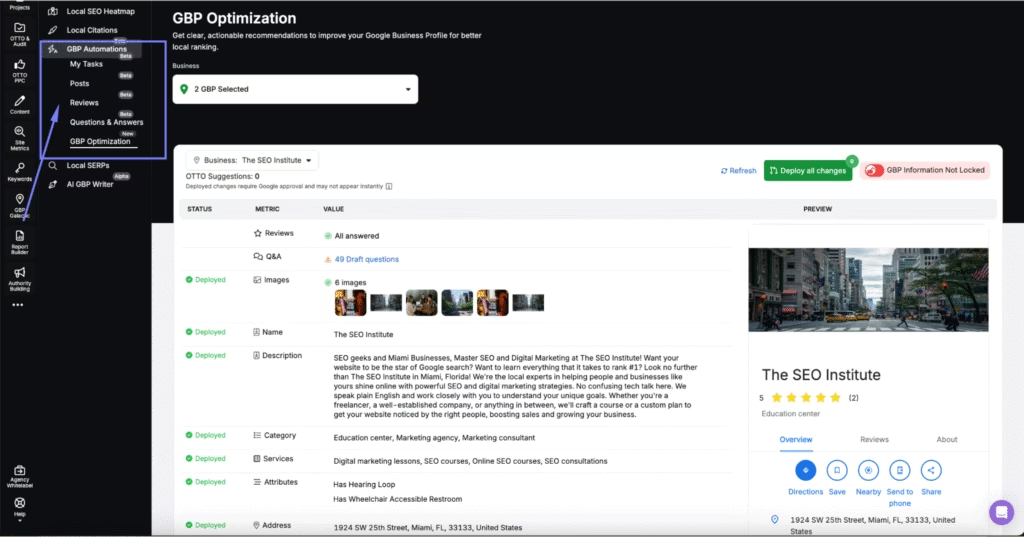
- Upload optimized photos and publish weekly posts using the Search Atlas GBP Automation Tool. Posts through the Search Atlas GBP Automation Tool improve visibility and freshness signals in the Map Pack.
- Set up AI-generated Q&A content using the Search Atlas OTTO SEO’s Q&A Automator to answer common queries with keyword-rich answers.
- Respond to all reviews within 1–2 days. Use the Search Atlas OTTO SEO’s AI Review Responder to automate high-quality, sentiment-aware replies.
- Push your NAP (Name, Address, Phone) to 1,000+ directories using the Search Atlas Local Citation Tool. The Search Atlas Local Citation Tool includes 5 major aggregators like Data Axle and Neustar Localeze.
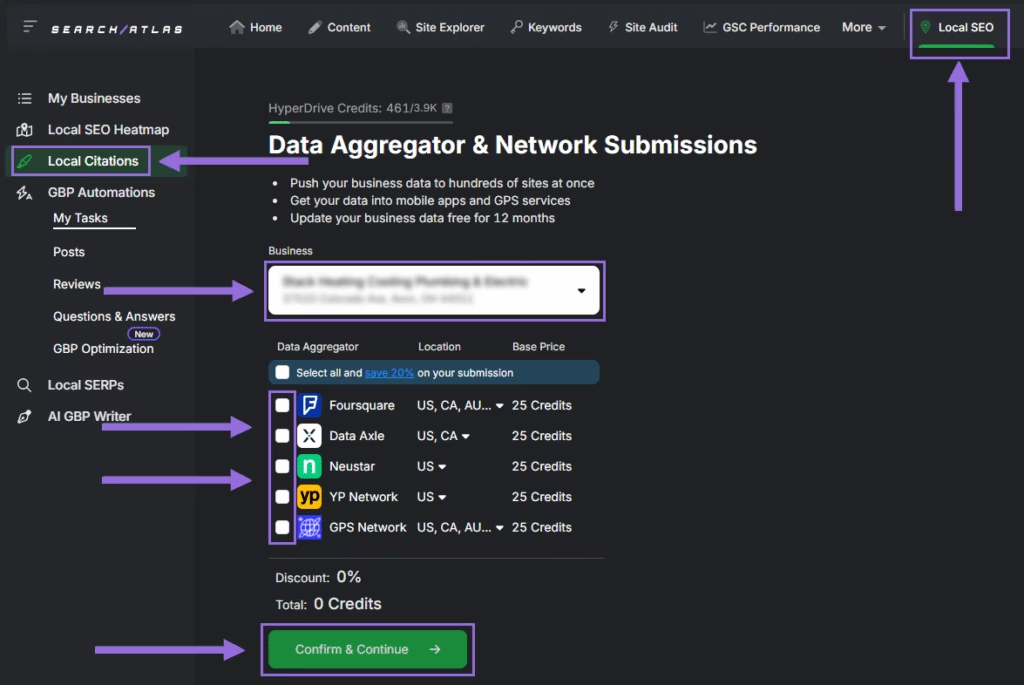
- Track performance using the Search Atlas Local SEO Heatmap Tool. The Search Atlas Local SEO Heatmap Tool shows average ranking by keyword and pin location across your service area.
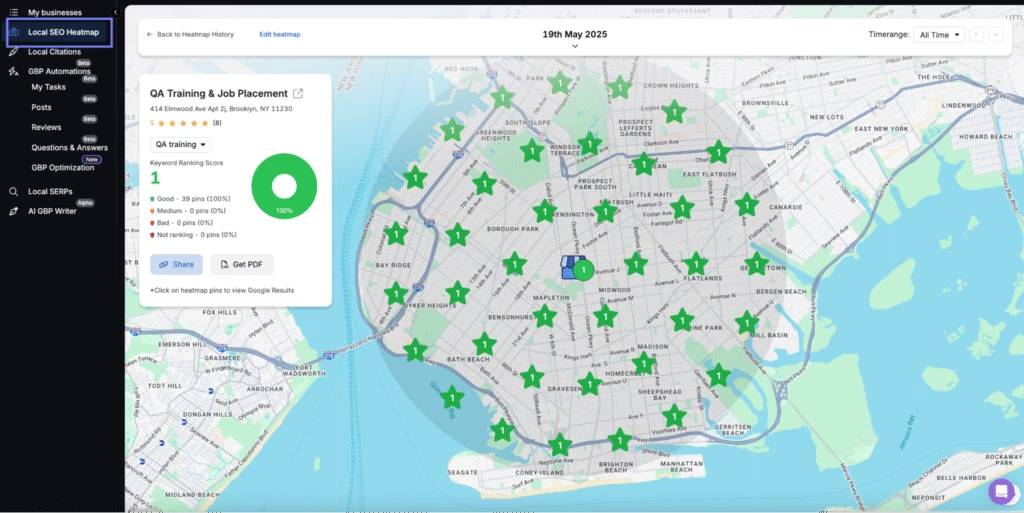
GBP optimization using the Search Atlas Google Business Profile Management Software directly affects local search rankings and review engagement, while accurate citation management strengthens entity consistency and authority across the local web.
13. Optimize Listings for Internal Search (Airbnb, Etsy, Amazon)
Optimizing listings for internal search engines on platforms like Airbnb, Etsy, and Amazon is a platform-specific SEO technique that improves product discoverability and drives conversion-focused traffic.
Each platform uses its own ranking algorithm, but relevance, engagement metrics, and structured metadata play the main roles in visibility.
To optimize internal listings for search, follow the listing SEO techniques below.
- Use high-intent, platform-specific keywords in your listing title, tags, and description. Tools like Amazon Autocomplete or EtsyRank reveal real search behavior.
- Fill out every listing field to improve filtering relevance, especially category, material, features, and attributes.
- Upload high-resolution images with file names and alt text that include relevant descriptors.
- Encourage positive reviews and respond to questions or feedback to improve trust and engagement metrics.
- Update availability and pricing regularly to increase listing freshness and algorithmic favorability.
Adapting listings for internal search is one of the Airbnb SEO optimization techniques 2025 demands, helping sellers appear in filtered search results, boosting impressions, and increasing conversions through higher relevance alignment.
14. Add Multiple Schema Types to Pages
Adding multiple schema (structured data) types to your pages is a technical SEO technique that enhances your visibility in SERPs by providing structured data for Google’s rich results. Schema markup helps search engines interpret the page’s purpose and entities, increasing eligibility for features like reviews, FAQs, events, and product snippets.
To implement structured data for SEO, follow the schema markup SEO techniques listed below.
- Use the Search Atlas Schema Markup Generator to generate JSON-LD markup in the appropriate format.
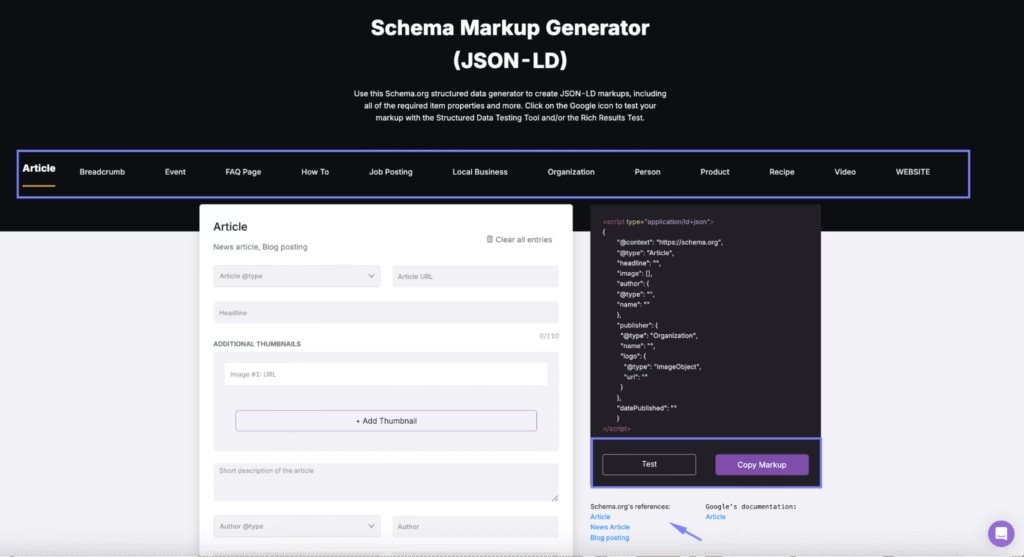
- Add multiple schema types per page depending on the page type, such as FAQPage, HowTo, Product, Organization, or LocalBusiness,using the Search Atlas Schema Markup Generator Tool.
- Use the @graph structure in JSON-LD to combine multiple schemas on the same page and reinforce entity relationships.
- Include nested schemas where relevant, such as AggregateRating inside Product or Answer inside FAQ.
- Test schema output using the Rich Results Test and validate accuracy in Google Search Console.
Structured data gives your content more SERP real estate, increases CTR, and enhances semantic clarity for machine understanding, especially with systems like MUM and BERT.
15. Improve Mobile UX With Core Web Vitals Fixes
Improving mobile UX with Core Web Vitals fixes is a technical and user experience SEO technique that boosts rankings through performance signals in Google’s Page Experience system. Core Web Vitals, which primarily include Largest Contentful Paint (LCP), Interaction to Next Paint (INP), and Cumulative Layout Shift (CLS), measure how fast, responsive, and stable your site feels on mobile.
To improve mobile UX and Core Web Vitals, follow the mobile SEO techniques below.
- Use the Search Atlas Site Audit Tool to run a Core Web Vitals audit and locate pages failing LCP, INP, or CLS thresholds.
- Optimize images with next-gen formats (WebP, AVIF), lazy loading, and compression to speed up visual rendering.
- Minimize JavaScript execution time and defer non-critical scripts to reduce interaction delay.
- Stabilize layout shifts by setting explicit width/height for images, ads, and embeds.
- Enable mobile-first responsive design with tap-friendly elements and readable fonts.
Google uses Core Web Vitals as tie-breaking ranking signals when multiple pages have similar relevance. Fixing CWV directly improves UX, bounce rate, and rankings on mobile-first indexing.
How to Automate SEO Techniques Using OTTO SEO?
Automating SEO techniques using OTTO SEO helps improve SEO performance by executing repetitive optimization tasks at scale with minimal manual input. OTTO SEO is an autonomous AI system within the Search Atlas platform that applies technical fixes, publishes content, builds backlinks, and enhances local presence, all based on your domain goals and target keywords.
Search Atlas OTTO SEO automates the techniques of SEO by handling key areas like content creation, internal linking, schema markup, local SEO, and link building. The AI agent reduces time-to-impact by analyzing your site’s performance and deploying context-aware improvements across UX, Authority, Content, and Technical SEO (XACT) pillars.
Automate SEO techniques using Search Atlas OTTO SEO as shown below.
- Fix on-page issues such as missing alt text, title tags, meta descriptions, headings, and Open Graph/Twitter tags. OTTO SEO injects these elements dynamically using NLP-enhanced AI generation.

- Optimize content by identifying missing keywords, deploying entity-based schema, and adding knowledge graph markup. OTTO SEO uses data from Google Search Console to enhance relevance and improve rankings.
- Generate internal links between similar pages. OTTO SEO uses its crawler data to recommend contextual link insertions that improve crawlability and content discoverability.
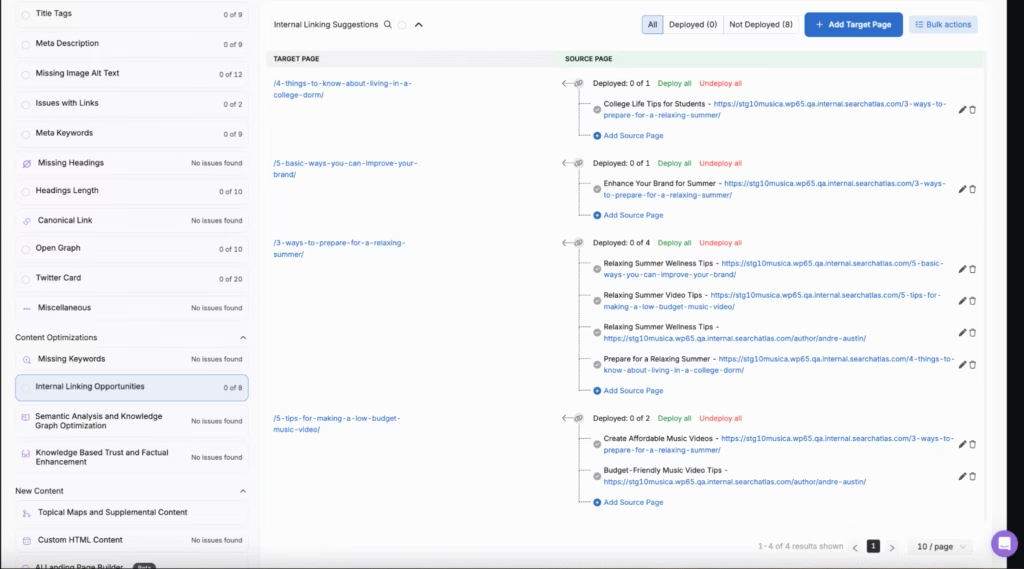
- Deploy new topical content using the Topical Map generator. OTTO SEO maps keyword relationships and auto-generates full-length articles to strengthen topical coverage.
- Automate schema markup and NLP signals. OTTO SEO generates and injects JSON-LD markup for FAQs, articles, local businesses, and other content types.

- Index new pages with Instant Indexing and Homepage Linking. OTTO SEO flags unindexed URLs, links them from the homepage, and submits them to Google through dynamic indexing.

- Automate GBP content by scheduling AI-generated Google Business Profile (GBP) posts, review responses, and Q&A replies. OTTO SEO allows full customization over tone, approval process, and publishing cadence.
- Build backlinks at scale using Cloud Stacks, Press Release Distribution, and WILDFIRE. OTTO SEO outreach and digital PR tools generate AI content and distribute links through cloud-hosted sites, media networks, and a vetted link exchange system.
OTTO SEO automates all SEO techniques, including technical optimization, content deployment, local SEO, and link building. Use the Search Atlas OTTO SEO Tool to improve SEO across your site without manual intervention.
What is the Relation between SEO Techniques and SEO Strategy?
The relation between SEO techniques and SEO strategy is functional. SEO techniques are tactical actions that support a broader SEO strategy, which defines the long-term direction and priorities for organic growth. Techniques execute specific steps that align with strategic goals such as increasing domain authority, improving topical relevance, or expanding keyword reach.
An organic SEO strategy (such as creating topic clusters or targeting informational queries) determines what content to publish, which pages to prioritize, and which KPIs to track. SEO techniques (such as building internal links or optimizing schema markup) serve as tools to carry out those decisions. For example, a search engine optimization strategy focused on improving E-E-A-T would guide the use of techniques like securing expert quotes or acquiring high-authority backlinks.
SEO techniques evolve based on SEO strategy, and the SEO strategy succeeds when SEO techniques are applied consistently.
What is the Difference between SEO Techniques and SEO Best Practices?
The difference between SEO techniques and SEO best practices lies in purpose. SEO techniques are tactical actions that implement optimization, while SEO best practices are tested guidelines that increase success rates across search engines. SEO techniques are how-tos, and SEO best practices are should-dos.
Adding internal links is an SEO technique. Linking from high-traffic pages to underperforming pages is an SEO best practice.
Basic SEO techniques solve specific problems or achieve targeted improvements. Organic SEO best practices provide a framework for applying techniques correctly and sustainably.
What is the Difference between SEO Techniques and SEO Tips?
The difference between SEO techniques and SEO tips is that techniques offer replicable processes, while tips offer opportunistic insights. SEO techniques are structured execution methods, while SEO tips are informal suggestions based on trends, experience, or personal observation.
Search engine optimization tips often include recommendations like “avoid over-optimizing anchor text” or “watch for Google’s algorithm updates.” SEO tips help refine decision-making or avoid common mistakes. SEO techniques, however, involve specific implementation steps, such as generating a schema for review pages or compressing images to improve Core Web Vitals.
A tip might suggest “update your content after a Google core update.” A technique would be to “use the Search Atlas Site Audit Tool to identify content that lost traffic and refresh it with new data.”


